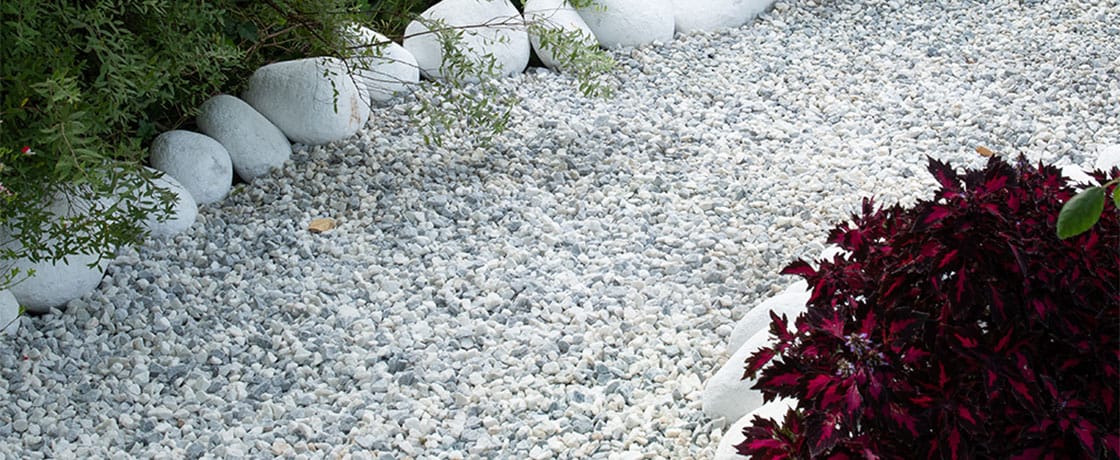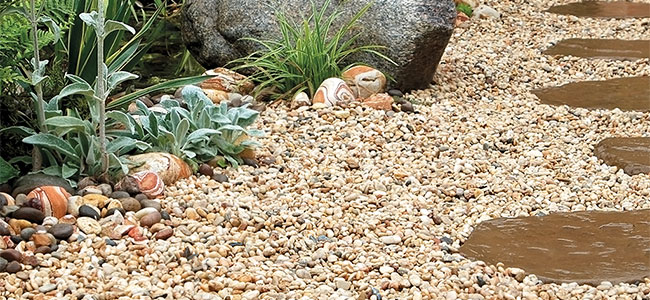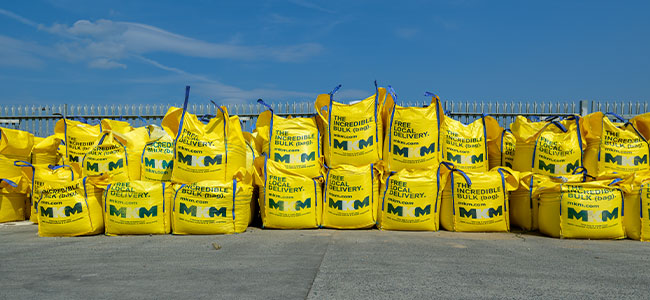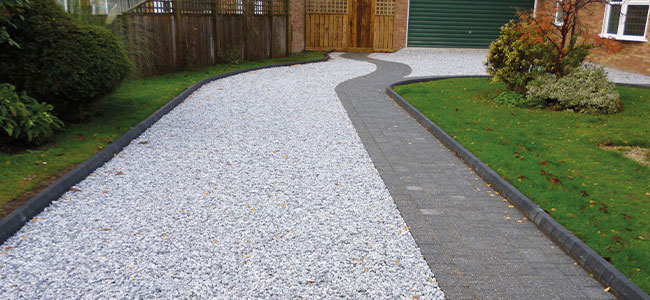
Choosing the Right Decorative Aggregate for Your UK Landscaping Project
Published on June 26, 2025
Posted in How To
by MKM
6 min read
Decorative aggregates continues to be a top choice for landscaping projects across the UK. Its versatility, affordability, and low-maintenance appeal make it ideal for both domestic gardens and commercial outdoor spaces. Whether you're looking to define a garden path, enhance a driveway, or create stylish borders and beds, the right option can transform your landscape.
At MKM Building Supplies, we know that with so many options available, selecting the right decorative aggregate can feel overwhelming. That’s why we’ve created this comprehensive guide—tailored to UK climates and landscaping styles—to help you choose the perfect option for your project.
What are Decorative Aggregates?
Decorative aggregates refer to lose stones and gravel used for landscaping rather than construction. It's a non-structural material often chosen for its aesthetic qualities, practicality, and ease of installation. Available in a variety of sizes, shapes, and colours, decorative gravel can be used in numerous ways:

Common applications
Gravel has a wide range of common applications in landscaping. It can be used to create garden paths that are both functional and attractive, guiding visitors through your outdoor space with clearly defined routes. For driveways, gravel provides a cost-effective alternative to paving, offering excellent drainage and a clean, classic finish. In garden borders and beds, it serves as mulch or infill, helping to suppress weed growth, retain soil moisture, and add visual texture. Smaller gravels or coloured stones are also ideal for enhancing the appearance of potted plants and rockeries, especially in alpine gardens. Additionally, gravel is often used around pond edges, where it complements water features and helps them blend naturally into the surrounding landscape.
Functional benefits
Gravel offers several functional benefits that make it a practical choice for landscaping. One of its key advantages is improved drainage; most types of gravel are permeable, which helps manage surface water and reduce the risk of flooding—particularly important during the UK’s wet seasons. When installed with a geotextile membrane, gravel also provides effective weed control, suppressing unwanted growth without the need for chemical treatments. It is a low-maintenance option as well; keeping it tidy typically requires just an occasional rake, with no mowing, pruning, or sealing necessary. Additionally, gravel is compliant with Sustainable Urban Drainage Systems (SUDS), meaning it supports the control of surface runoff and promotes groundwater absorption. This compliance is especially important for meeting UK planning regulations, particularly when installing driveways. Check out our top options below:

Crushed Granite (Granite Chippings)
Overview:
Crushed granite, or granite chippings, is a hard, angular gravel available in a variety of colours, including grey, pink, and black. The stones usually range from 14–20mm in size.
Best for:
This type of gravel is excellent for driveways, high-traffic footpaths, and modern garden designs.
Pros:
Granite chippings are extremely durable and long-lasting. Their angular shape helps them lock in place, which reduces movement and adds traction, making surfaces safer for walking and driving.
Cons:
Due to its coarse texture, granite gravel is not ideal for barefoot use or children's play areas.
Pro tip:
A 14–20mm granite chip offers a good balance between visual appeal and stability. For areas that experience extra-heavy use, consider installing stabilisation grids underneath to further reduce movement.
Cotswold Chippings (Limestone)
Overview:
Cotswold chippings are a light cream to golden-beige limestone gravel that gives off a warm, rustic charm.
Best for:
These chippings are perfect for traditional or cottage-style homes, flower beds and borders, and low-traffic decorative driveways.
Pros:
Their bright, warm tones help lighten darker areas and pair beautifully with brickwork or stone buildings. They are especially effective in enhancing the look of period or heritage gardens.
Cons:
Because limestone is a softer stone, it may begin to break down over time in areas with high foot or vehicle traffic.
Pro tip:
If you're planning to use Cotswold chippings on a driveway, consider topping a harder sub-layer—such as crushed granite—with the chippings to improve durability and reduce wear.
Overview:
Slate chippings are flat, angular stones available in bold colours like plum, grey, and green. They come in a variety of sizes, typically ranging from 20mm to 40mm.
Best for:
These chippings are well suited for garden borders and beds, mulching around plants, pond edging, and as accents in contemporary garden designs.
Pros:
Slate chippings are frost-resistant, making them well suited to UK winters. Their reflective surfaces add contrast and visual depth to a landscape, and they break down slowly, serving as a long-lasting mulch.
Cons:
Because of their sharp edges, slate chippings can be uncomfortable to walk on, so they’re best kept away from paths and high-traffic areas.
Pro tip:
For full colour coverage and effective weed control, lay slate chippings to a depth of about 40mm. For enhanced visual interest, consider pairing them with black mulch or bark.
Other Popular Gravel Types
Golden Gravel:
This gravel features warm tones of gold, honey, and amber, making it a favourite in classic garden styles. Its angular nature and striking colour make it great for both driveways and garden paths.
Basalt Gravel:
Dark grey to black in colour, basalt gravel offers a sleek, modern look. It is very durable and works well in contemporary, minimalist landscapes as well as on driveways.
Quartz/Marble Gravel:
Available in bright white or pink-toned varieties, quartz or marble gravel is typically used to create high-contrast features. These stones are ideal for planters, flower beds, and small decorative zones rather than for covering large areas.
Choosing the right size:
Gravel size is just as important as type. The size affects not only appearance but also function and stability.
1. Ground preparation
Excavate: Begin by digging to a depth of 100mm for garden paths and 150mm for driveways.
Weed Control: Lay a geotextile membrane over the excavated area. This will help suppress weed growth while still allowing water to drain freely.
Sub-base (for driveways): For driveways, install a sub-base layer using MOT Type 1 aggregate to create a stable and durable foundation.
2. Laying the aggregates
For paths and garden borders, a gravel depth of 50mm is generally sufficient.
For driveways, aim for a thicker layer of around 75–100mm to support regular vehicle traffic.
3. Edging
Install edging using materials such as timber sleepers, steel edging, or bricks. This helps define the boundaries of the gravelled area, prevents the gravel from spreading into unwanted areas, and enhances the overall appearance of the space.
4. Maintenance tips
Rake the gravel regularly to keep the surface level and evenly distributed.
Use a leaf blower to remove fallen leaves and debris without displacing the stones.
To manage weeds, treat the area occasionally with a pre-emergent herbicide or apply spot treatments as needed.

Gravel and UK-specific considerations:
Drainage & regulations
Because decorative gravel is permeable, it supports Sustainable Urban Drainage Systems (SUDS) regulations. This means you typically do not need planning permission to install a new gravel driveway. Additionally, gravel helps manage water runoff, which is particularly useful in flood-prone areas.
Note: If your property is adjacent to public footpaths or roads, you may need to install stabilisation grids to prevent gravel from spilling into these public areas.
Weather resistance
Aggreagtes such as slate and granite are highly resistant to frost, making them ideal for the UK’s harsh winter conditions.
Lighter stones like limestone may weather more quickly but still perform well in temperate climates.
Designing with decorative aggregates:
Decorative gravel isn’t just practical—it can also be a standout feature in your garden design.
Creative ideas:
Pair grey slate with stainless steel accents to achieve a sleek, modern look.
Use Cotswold chippings around brick-built homes to emphasise traditional charm.
Combine gravel with paving slabs or wooden sleepers to add contrast and structure.
Try using different gravel colours to define separate zones or draw attention to focal points within your garden.
Design tip:
Select a gravel colour that complements the materials already present in your garden—such as brick, stone, timber, or metal—to create a cohesive and visually appealing design.

Frequently Asked Questions (FAQs)
How do I calculate how much gravel I need?
To work it out, measure your space and decide how deep you want the gravel.
-
Measure the area – Length × width (in metres) = area in m²
-
Choose your depth – 30–50 mm for decorative use, 50–60 mm for driveways
-
Calculate volume – Area × depth (in metres) = volume in cubic metres
Example:
A 5 m × 3 m area with 5 cm (0.05 m) depth = 0.75 cubic metres of gravel. Note: Gravel is usually sold by weight (in tonnes), but calculated by volume. Conversion depends on the type and density of gravel (typically around 1.5–1.8 tonnes per cubic metre).
What size gravel is best for a driveway?
Best gravel size for driveways is 14–20mm angular gravel. It’s stable, durable and easy to walk on.
Why it works:
-
Locks together for a firm surface
-
Handles vehicle weight
-
Doesn’t get stuck in tyres or shoes
How far will 1 tonne of gravel cover?
As a general guideline, one tonne of gravel typically covers approximately:
-
9.3 square metres at a depth of 5 cm
-
7.4 square metres at a depth of 7.5 cm
-
5.6 square metres at a depth of 10 cm
-
Gravel Size: Smaller gravel (10 mm) suits 30–40 mm depth; larger gravel (20 mm) suits 40–50 mm.
How deep should gravel be?
Gravel should be laid to a depth of 5–10 cm, depending on its use.
-
Driveways: At least 5–7.5 cm of gravel, with a 10–15 cm compacted sub-base for stability.
-
Paths & Gardens: Around 4–5 cm is usually enough.
-
Weed Control: A deeper layer helps block light and reduce weed growth.
-
Gravel Size: Smaller gravel (10 mm) suits 30–40 mm depth; larger gravel (20 mm) suits 40–50 mm.
How much gravel do you need for a shed base?
To work out how much gravel you need:
-
Measure the base area
Measure the length and width of the shed base in feet, then multiply them to get the area in square feet.
For example, a 10 ft × 12 ft base = 120 sq ft. -
Choose a gravel depth
A depth of 4 inches (approximately 0.33 feet) is usually recommended for a stable base. -
Calculate the volume in cubic feet
Multiply the area by the depth.
120 sq ft × 0.33 ft = 39.6 cubic feet. -
Convert to cubic yards
Divide the cubic feet by 27.
39.6 ÷ 27 = roughly 1.47 cubic yards. -
Allow for extra gravel
Add 10–20% extra to account for settling and waste.
1.47 × 1.1 = about 1.62 cubic yards. -
Use a gravel calculator
Online calculators can help simplify this process if you prefer.
Final thoughts: why choose aggregates?
Decorative aggregates offer an attractive, affordable, and low-maintenance way to enhance your outdoor space. With the right choice of material, size, and installation method, it can elevate any garden or driveway while remaining practical and sustainable.
» Enhances drainage
» Easy to install and maintain
» Wide variety of colours, sizes, and textures
» Compliant with UK environmental regulations
At MKM Building Supplies, we stock an extensive range of decorative aggregates, available in bulk bags—from driveway-ready granite chippings to soft pea gravel for garden paths. Our expert team is always on hand to guide you through your options and offer advice based on your project and location. Visit your local MKM branch or browse online to find the bulk bag of decorative aggregates for your next landscaping project.